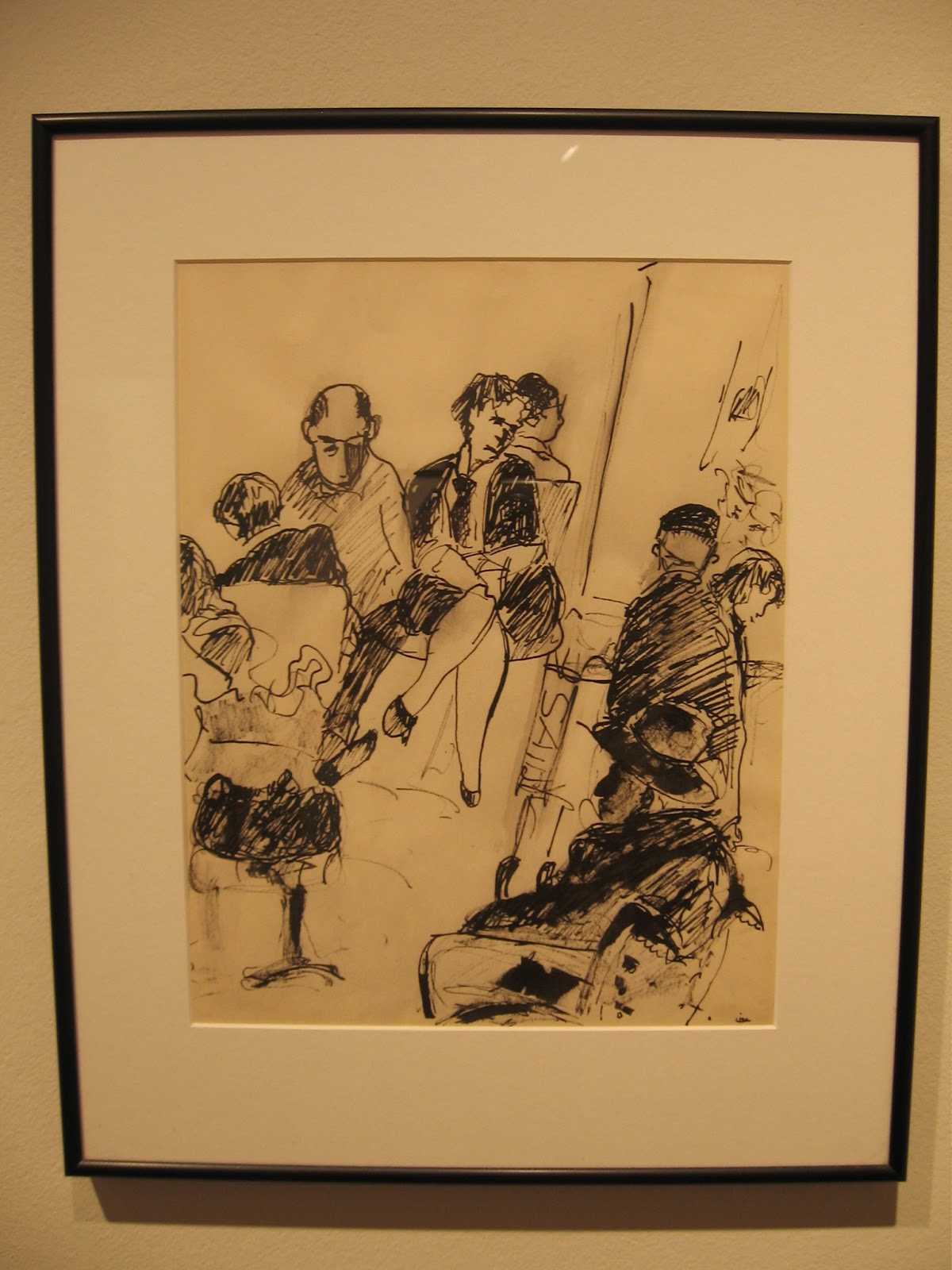Elegant Ephemera
By Tom Wachunas
“…Thus there exists an essential truth that
must be disengaged from the outward appearance of the objects to be
represented. This is the only truth that matters…Exactitude is not the truth.”
-Henri Matisse, 1947
EXHIBIT: The Art of Living – art by Lisa Vincenzo
at The Little Art Gallery, located in the North Canton Public Library, 185
North Main Street, North Canton, THROUGH AUGUST 23 / 330.499.4712 ext. 312 www.ncantonlibrary.com
Read Lisa
Vincenzo’s statement for this, her first-ever solo show, and it should become
clear that for her, drawing isn’t limited to being only a preparation, a step in
realizing a future “finished” work. “Drawings are my diary,” she writes, “and I
simply draw from life.” Her desire is for us to see her pieces as windows on
her “…deep empathy and love for all living things.” Her drawings, then, aren’t
merely academic exercises in recording the precise look of her subjects so much
as her response and relationship to their essences.
And what a
vigorous, captivating response it is! Beneath the drawings’ sketchy appearance
is a confident, visceral spontaneity - rendered in a variety of deftly handled
media including watercolor, ink, pencil, charcoal, lithography and even IPad.
Whether bold or delicate, the visual choreography of her mark-making is imbued
with purposeful energy without being fussy or extraneous.
This is to say
that even at their most abstracted, the drawings indicate an intuitive grasp of
communicative gestural dynamics. Without dependence on “realistic” detail,
pieces such as Midas Breaks Free
(India ink) and Spirit Horse (watercolor),
for example, still effectively convey the horses’ mass in motion. Her watercolor, Women with Strings, for all of the
paint’s muscular blackness, flows nonetheless with lyrical expressivity.
Vincenzo understands how variations in the breadth and character of lines, the
saturation of tones and relative sizes and qualities of shapes can set up
engaging visual rhythms that guide our eyes around the picture plane.
A particularly
exciting component of the exhibit is the inclusion of 13 IPad color pieces (Kitten, shown above, is an example).
While intimate in scale, they fairly burst with a celebratory radiance. Rather
than opting to wow us with any number of the dazzling special effects available
through digital technology, Vincenzo offers disarmingly simple compositions
that have a painterly air. Several of them, in their refined, elegant design,
lusciously saturated color and simplified shapes remind me of the arresting
balance of Matisse’s late-career paper cut-outs.
With these
digitally-generated images, I think Vincenzo successfully presents unassailable
proof that efficacious drawing need not be constrained to historically
traditional tools and techniques – techniques in which she is clearly adept. In
a broader sense, her works remind me that at its core drawing is, after all,
pure configuration. It is a way of seeing,
then organizing spatial relationships, in two or three dimensions, between various formal elements including
line, shape/form, texture and tonality/color.
Vincenzo’s art is
a passionate commitment to being in the moment, to skillfully observing the ephemeral, and making
palpable the spirit of life itself.
PHOTOS (from top):
Kitten (IPad); Airport (India Ink); Woman
with the Red Umbrella (Pencil); I
Dream of Jungles and Stars (Charcoal and India Ink)

















